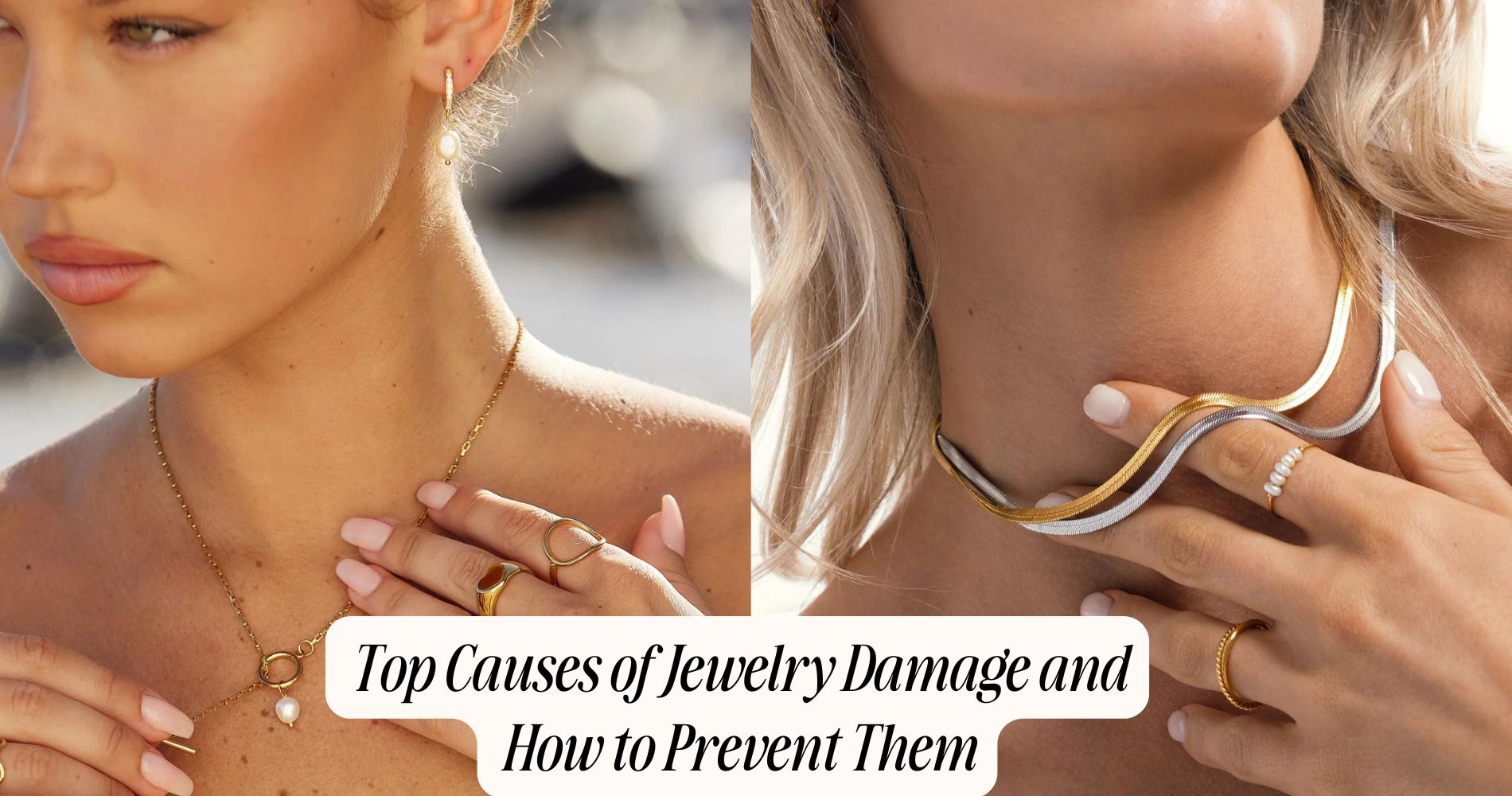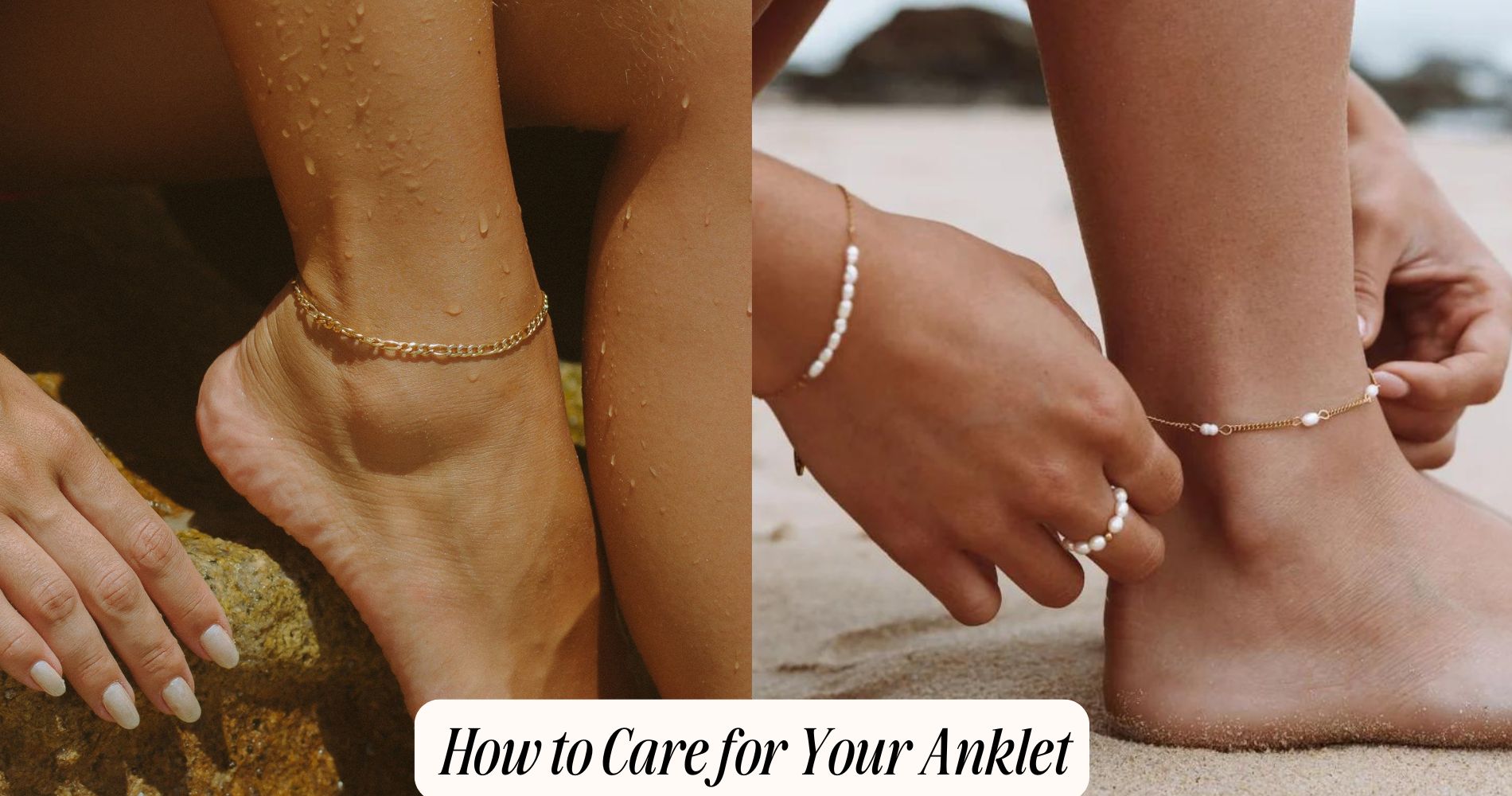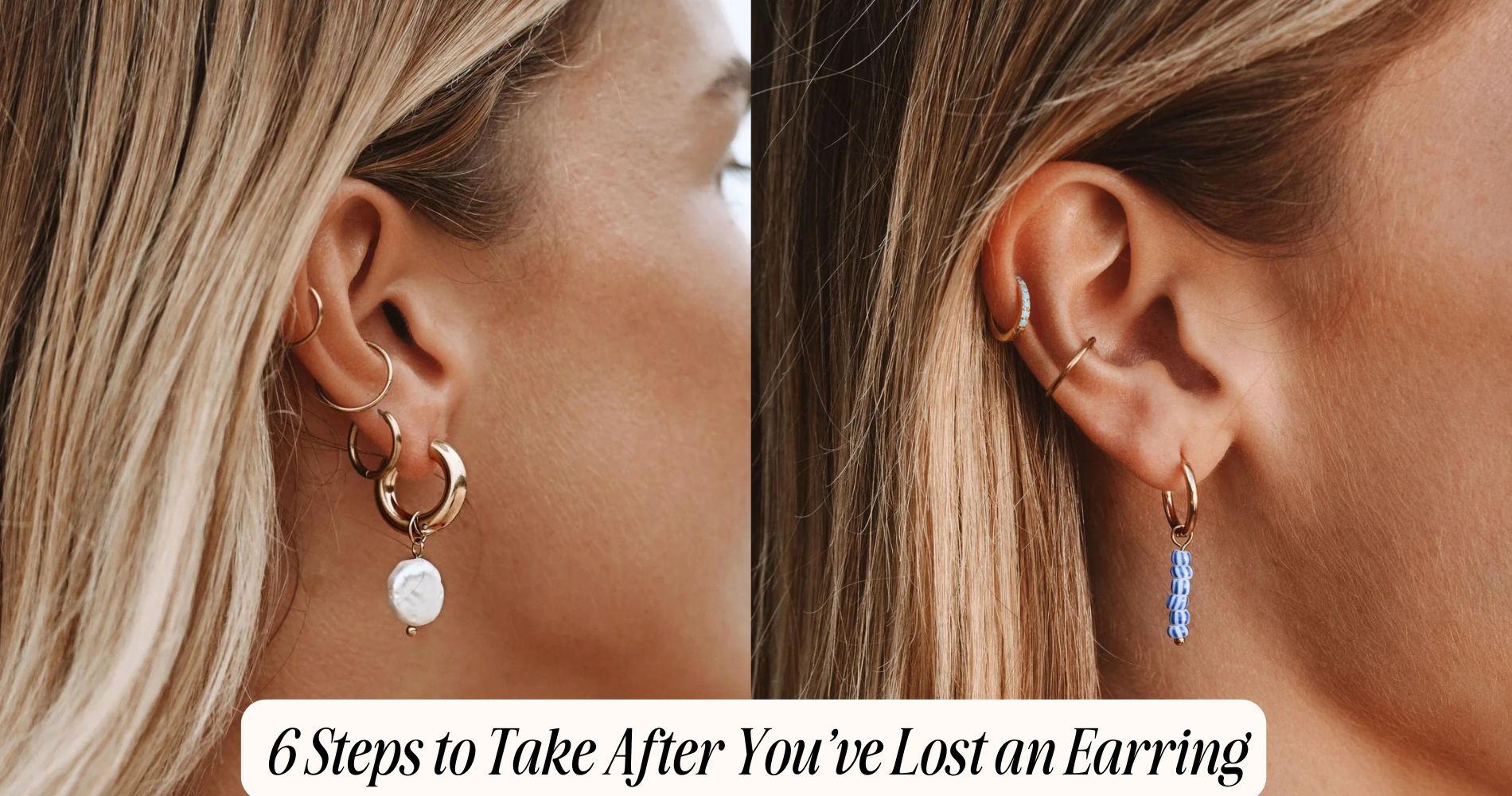
Top Causes of Jewelry Damage and How to Prevent Them
Understanding the causes of jewelry damage is essential for keeping your favorite pieces looking their best. Jewelry damage often results from daily wear and tear, improper storage, exposure to chemicals, and physical impacts. To prevent this, remove your rings during chores and workouts to avoid scratches and bending. Store your pieces in organized compartments to prevent tangling and scratches. Always take off jewelry before using harsh cleaning agents, as they can cause discoloration. Additionally, maintain a stable environment to avoid humidity and temperature fluctuations that tarnish metals. Regular cleaning and professional inspections are key to preserving your jewelry's beauty and longevity. For added durability, consider investing in Waterproof Jewelry from our collection, which offers protection against moisture and tarnishing. Stick around to explore more tips on safeguarding your treasures.
Daily Wear and Tear
Throughout your daily routines, jewelry is often subjected to wear and tear that can greatly impact its appearance and longevity. You may not realize it, but simple activities like washing your hands, exercising, or even putting on a jacket can lead to significant damage.
For instance, ring scratches are a common issue; wearing rings while doing chores or handling rough materials can cause unsightly marks on their surfaces. These scratches not only affect the visual appeal but can also weaken the structure of the ring over time.
Additionally, necklaces are prone to tangling, especially when layered with other pieces or stored carelessly. This tangling can lead to kinks and breaks in the chain, making it difficult to wear and diminishing its overall aesthetic. You might find that the more frequently you wear a necklace, the higher the risk of it getting caught on clothing or other objects, further exacerbating the issue.
To mitigate these daily wear and tear effects, consider being mindful of when and how you wear your jewelry. By taking small precautions, like removing rings before tasks and untangling necklaces after wear, you can help maintain their beauty and integrity.
Improper Storage
When jewelry isn't stored properly, it can lead to significant damage that compromises both its appearance and functionality. To prevent this, you need to implement effective organizing techniques. For instance, consider using a dedicated jewelry box with compartments. This keeps your pieces separated, preventing scratches and tangling.
Additionally, using soft pouches for each item can provide extra protection, especially for more delicate pieces.
When it comes to travel precautions, be mindful of how you pack your jewelry. Avoid tossing everything into one bag; instead, use a travel organizer specifically designed for jewelry. This will help minimize movement and friction that can cause damage.
If you're packing delicate items, consider wrapping them individually in soft cloths or bubble wrap for added security.
Moreover, avoid storing jewelry in humid areas like bathrooms, as moisture can lead to tarnishing. Instead, opt for a cool, dry place.
Regularly check your storage methods to verify they're still effective. By being proactive about your jewelry storage, you'll preserve its beauty and longevity, ensuring it remains a cherished accessory for years to come.
Exposure to Chemicals
Even with proper storage, your jewelry can still suffer damage from exposure to chemicals found in everyday products. Household cleaners, hair products, and even skincare items often contain harsh chemicals that can trigger chemical reactions with your jewelry.
These reactions can lead to discoloration, corrosion, or even structural degradation, particularly for pieces made from sensitive materials like silver, pearls, or certain gemstones.
It's essential to be aware of your jewelry's material sensitivity. For instance, chlorine can tarnish silver and damage pearls, while certain acids can harm softer stones like opals.
To prevent damage, always remove your jewelry before using cleaning agents or applying personal care products. Additionally, store your jewelry away from areas where these chemicals are used frequently—like bathrooms and kitchens.
If you suspect your jewelry has been exposed to harmful substances, clean it gently with a soft cloth and mild soap, then rinse thoroughly with water. Regular maintenance can help mitigate the effects of any accidental exposure, ensuring your pieces remain beautiful and intact.
Physical Impact
When it comes to protecting your jewelry from physical impact, avoiding hard surfaces is essential. Each time your pieces come into contact with a solid object, the risk of scratches or dents increases considerably.
Additionally, the way you store your jewelry can make a big difference; using appropriate storage solutions helps minimize movement and potential damage.
Avoiding Hard Surfaces
Many jewelry enthusiasts underestimate the risk of physical impact on their precious pieces, but avoiding hard surfaces is essential for maintaining their integrity. Jewelry can easily chip, scratch, or bend when it comes into contact with hard surfaces. To mitigate this risk, you should always be mindful of where you place your jewelry, especially when removing or adjusting it.
Whenever you take off your rings, bracelets, or earrings, do so over soft surfaces like a velvet cloth or a cushioned tray. These soft surfaces act as a protective layer, absorbing the shock of accidental drops.
Additionally, consider using jewelry padding in your storage solutions; this guarantees that your pieces remain cushioned and secure, reducing the likelihood of damage during handling.
When engaging in activities that might lead to physical impacts, such as sports or heavy lifting, it's best to remove your jewelry altogether.
Storage Solutions Matter
Proper storage solutions play an essential role in preventing physical damage to your jewelry. When you think about jewelry organization, consider how the right storage can protect your pieces from scratches, tangles, and breakage.
Using ideal containers designed for specific types of jewelry is key. For instance, soft-lined jewelry boxes or pouches can help safeguard delicate items like earrings and rings, while drawer organizers can keep necklaces untangled and easily accessible.
Avoiding overcrowding is vital. If you stuff your jewelry into a single box, you increase the risk of pieces rubbing against each other, leading to scratches or even loss of stones. Instead, utilize separate compartments or trays that can accommodate your collection without cramming.
Additionally, consider the materials of your storage solutions; breathable fabrics can help prevent tarnishing on silver, while hard cases offer solid protection for more robust items.
Regularly evaluating your storage setup can also enhance your jewelry's longevity. Make adjustments as your collection grows, ensuring that each piece has a designated space.
Humidity and Temperature Changes
Managing humidity and temperature changes is essential for preserving the integrity of your jewelry. Fluctuating moisture levels can cause metals to tarnish, while extreme temperatures may weaken gemstones or even lead to cracks.
It's vital to maintain a stable environment, especially if you live in an area with high humidity or significant temperature variations.
To protect your pieces, consider investing in climate control solutions. A dehumidifier can help reduce moisture levels in your storage area, preventing corrosion and mold growth. Similarly, air conditioning can regulate temperature, ensuring that your jewelry remains in a consistent environment.
When storing your jewelry, opt for airtight containers or display boxes with silica gel packs to absorb excess humidity. Avoid leaving your jewelry in direct sunlight or near heat sources, as this can lead to rapid temperature changes that may damage your pieces.
Regularly check your storage conditions and make adjustments as necessary to maintain ideal humidity and temperature levels. By being proactive about climate control, you'll help extend the life of your cherished jewelry, keeping it beautiful and intact for years to come.
Lack of Regular Maintenance
Neglecting regular maintenance can lead to significant wear and tear on your jewelry, affecting both its appearance and longevity.
It's crucial to prioritize cleaning and schedule professional inspections to catch any potential issues early.
Importance of Cleaning
Cleaning your jewelry regularly is vital for maintaining its beauty and integrity over time. Without proper care, dirt, oils, and environmental pollutants can accumulate, dulling the shine and potentially damaging the materials. You mightn't notice these changes immediately, but neglecting cleaning can lead to more significant issues down the line.
Establishing a cleaning frequency is important. Depending on how often you wear your jewelry, you should aim to clean it at least once a month. For pieces worn daily, like engagement rings, consider more frequent cleanings—perhaps once a week.
Use appropriate cleaning techniques tailored to the specific materials of your jewelry. For example, a gentle solution of warm water and mild soap works well for most metals and gemstones, while ultrasonic cleaners can effectively remove grime from intricate designs.
In addition to regular cleaning, inspect your jewelry for any signs of damage or wear. This proactive approach not only enhances the appearance of your pieces but also prolongs their lifespan.
Professional Inspections Needed
Regular cleaning is just one part of jewelry maintenance; professional inspections play a significant role in preserving the condition of your pieces. Without these inspections, you might overlook vital issues like loose stones or weakened settings that can lead to costly damage.
Jewelry appraisals, conducted during these inspections, provide a detailed assessment of your items, ensuring you're aware of their current value and condition.
Expert recommendations from jewelers can guide you on how frequently your jewelry should be inspected, depending on factors like wear, type of metal, and the presence of intricate designs. They'll identify potential problems you may miss, such as hairline fractures or signs of wear that could compromise the integrity of your jewelry.
Additionally, professional inspections often include cleaning and polishing, which not only enhance the appearance of your pieces but also help in spotting any underlying issues.
By investing in regular inspections, you're not just maintaining your jewelry; you're preserving its value and ensuring it remains a cherished part of your collection for years to come.
Don't underestimate the importance of these expert evaluations; they're essential for long-term care.
Routine Checkups Recommended
To keep your jewelry in ideal condition, routine checkups are essential. Just like any valuable possession, your jewelry requires regular maintenance to prevent potential damage. Neglecting this aspect of jewelry care can lead to significant issues, such as loose stones, worn prongs, or tarnishing.
By scheduling periodic inspections with a professional, you can identify and address these problems early, ensuring your pieces remain stunning and intact.
Preventive measures play an important role in extending the lifespan of your jewelry. During checkups, a jeweler will assess the integrity of your items, checking for signs of wear and tear that you might overlook.
They can also perform necessary repairs, clean your pieces, and offer advice on proper storage and handling.
Incorporating routine checkups into your jewelry care regimen not only protects your investment but also enhances its appearance. You'll be able to enjoy your jewelry with peace of mind, knowing you've taken the necessary steps to maintain its beauty and value.
Make these checkups a priority, and your jewelry will thank you with years of brilliance and charm.
Cleaning Mistakes
When it comes to maintaining the beauty of your jewelry, overlooking certain cleaning practices can lead to significant damage. Many people mistakenly use harsh cleaning products that can strip away finishes or dull the sparkle of gemstones. It's essential to choose the right cleaning methods to preserve your pieces.
For instance, using abrasive materials like scouring pads may scratch delicate surfaces, while household cleaners containing bleach or ammonia can corrode metals. Instead, opt for gentle, jewelry-specific cleaning products that are designed to be safe for your pieces. A mild soap and warm water solution is often effective for routine cleaning.
Additionally, neglecting to properly rinse and dry your jewelry after cleaning can leave residue that attracts dirt and grime, further diminishing its luster. Always make sure you thoroughly rinse and gently pat dry your items with a soft cloth.
Wearing While Exercising
Cleaning your jewelry is just one aspect of its maintenance; how you wear it during physical activities also plays a considerable role in preventing damage.
When exercising, the type of jewelry you wear matters greatly. For instance, delicate pieces like chains and rings can easily snag or bend under high exercise intensity. Consider whether your chosen jewelry types are suitable for your workout routine.
If you're engaging in high-impact activities such as running or weightlifting, it's wise to leave your rings and bracelets at home. They can't only get damaged but also pose a risk of injury.
On the other hand, if you prefer lower-intensity workouts like yoga or Pilates, lightweight earrings or simple studs might be acceptable, provided they're securely fastened.
Additionally, sweat can tarnish metals and damage certain stones. To mitigate this, opt for sweat-resistant materials, like silicone rings or sports watches designed for activity.
Ultimately, knowing your exercise intensity and choosing the right jewelry can considerably prolong its life and maintain its beauty, ensuring you enjoy your pieces without worry.
Frequently Asked Questions
How Can I Identify Signs of Jewelry Damage Early?
To identify signs of jewelry damage early, regularly inspect your pieces. Look for common damage signs like loose stones, scratches, or discoloration. Use jewelry inspection tips, such as good lighting and magnification, to catch issues promptly.
Are Certain Metals More Prone to Damage Than Others?
Certain metals, like gold and platinum, offer superior durability compared to softer options like silver. Regular jewelry maintenance, including cleaning and proper storage, enhances longevity and prevents damage, ensuring your pieces stay beautiful longer.
Can I Repair Damaged Jewelry at Home?
You can repair damaged jewelry at home using DIY repairs. Common tools like pliers, soldering kits, and adhesive can help fix minor issues, but always assess the damage first to guarantee a successful restoration.
What Types of Jewelry Are Best for Active Lifestyles?
For your active lifestyle, go for jewelry made from durable materials like titanium or stainless steel. Opt for active styles such as minimalist designs or rubber bands, ensuring comfort and resilience during your daily activities.
How Often Should I Have My Jewelry Professionally Inspected?
You should have your jewelry professionally inspected at least once a year. Regular inspections can catch potential issues early, ensuring the longevity of your pieces. Follow these jewelry maintenance tips for ideal care and inspection frequency.
Conclusion
To protect your jewelry from damage, it's crucial to understand and address the common causes. By adopting proper storage practices, avoiding exposure to harsh chemicals, and maintaining regular cleaning routines, you can greatly extend the life of your pieces. Be mindful of where and when you wear your jewelry, especially during physical activities. Taking these proactive steps not only preserves your jewelry's appearance but also guarantees it remains a cherished part of your collection for years to come.

























Leave a comment
This site is protected by hCaptcha and the hCaptcha Privacy Policy and Terms of Service apply.